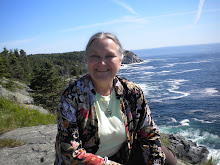When they dig under the streets, they find remnants of Roman and pre-Roman settlements, sometimes graves, sometimes just stuff, sometimes walls and floors. When they take the paint or plaster off the walls, they uncover frescoes that were put there a thousand years ago. The guest house where I stayed in Toledo has a plexiglas window through the floor into a lower level where they found a medieval cistern preserved with its cover, ready to use the next time the city water system fails.
Digging through all this material, what you find depends a lot on what you think beforehand. There´s a long-running argument in one town about whether a certain building was originally a church or originally a synagogue, with lines drawn between people who want to assert a long-running Christian hegemony and those who believe the earlier settlements were more diverse.
Diversity seems to be gaining in popularity. Here in Toledo, there is a former church that has been restored as a museum of the synagogue it once was. And a church building no longer in use but still owned by a local parish that is being restored as a sort of hybrid of mosque and early church. The local Catholic icon, San Ildefonso, is these days being identified with his Visigothic roots. Since the Visigoths were Unitarians, this is quite an exciting development for some of us!
It would be nice if some of the anti-diversity of the intervening past could be erased, but still, this looks like progress to me, this reconstruction of the ancient past to reinterpret who was here and what they believed.

No comments:
Post a Comment